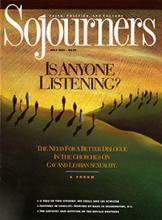Both times I saw Strangers in Good Company, a film directed by Cynthia Scott for the National Film Board of Canada (and called Company of Strangers there), the audience honored it with rarely witnessed applause. This was compelled by a lively and moving depiction of seven women, ages 69 to 88, who, along with their younger bus driver (out of commission with a sprained ankle), fend for themselves for 72 hours in the woods of Quebec after their day-trip bus breaks down. Their quest for survival challenges and reformulates ageist assumptions about the elderly.
The film's narrative is, in part, the narrative of the filmmaking. Seven women -- Constance Garneau, Mary Meigs, Cissy Meddings, Winnie Holden, Alice Diabo, Beth Webber, and Catherine Roche -- make their screen debut by playing themselves. A professional actress, Michelle Sweeney, plays the part of the bus driver. In the process, they bond to form a sisterly community. Use of non-professional actresses, on-location shooting, and a hand-held camera signal the film's affiliation with the documentary genre, for which Canada's National Film Board is internationally acclaimed.
However, this film might more accurately be described as docu-fiction. The lyrical opening and closing shots reveal the company of women supporting each other as they cross a field shrouded in mist. Although one criticism of the film might be that it is not "realistic" in that there is little of the complaining or fatigue one might expect from lost sleep and food, for me, these parallel "time-out-of-mind" images mark the film as a feminist fantasy. The timeless idyllic setting is a stage upon which to construct these women's "best selves" (as Mary Meigs notes in her memoir of the filmmaking), so that the film may be seen as an allegory of the heroism of ordinary women growing old on their life journey.
Read the Full Article
